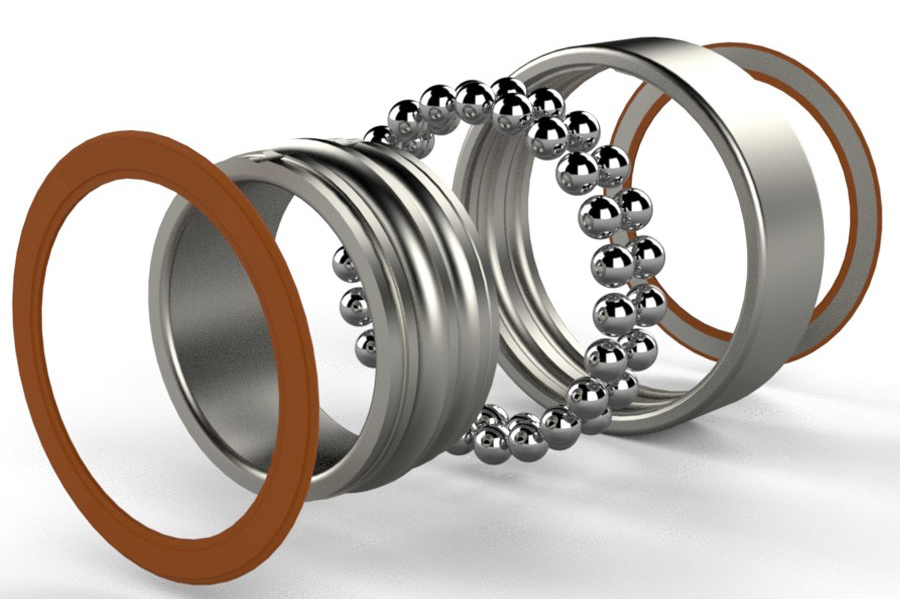
Bearing Handling

Proper Bearing Handling Can Help Prevent Bearing Failures
Ball bearings are very precise mechanisms which, in many cases, have geometrical tolerances measured in millionths of an inch. When handling, inspecting or mounting bearings, one should treat them as precision instruments. Most bearing failures are caused by the user's poor handling techniques.
Foreign particulate matter entering a bearing shortens its life, and provides one or all of the following unsatisfactory operating conditions.
- Increased noise
- Increased friction
- Ball skidding
- Increased heat
- Lessened lubrication life
Keeping the external surfaces and contiguous components (i.e., shafts and housings) contamination-free is also extremely important. Contamination on bearing faces or mating shoulder of the housings or shafts will cause a bearing pair to be out of parallel. This will cause the balls to run in a non-circumferential plane within the raceways, causing ball speed variations, ball skidding and binding between the races.
These phenomena increase friction which produces heat. Heat causes the lubrication to oxidize, which may result in premature bearing failure.
Important things to be kept in mind:
- Bearings should never be handled with bare hands. Talc-free finger cots or talc-free surgical gloves should be worn.
- Work areas must be clean, clean, clean (no food or smoking should be allowed).
- Bearings should be kept in original packaging until the moment they are ready to be installed.
- Do not clean housings and shafts with shop rags or cotton swabs, as these items usually will contribute to contamination. Clean room wipes or swabs should be used.
- The use of laminar flow work stations is strongly recommended.
- Bearing work tools must be kept clean and burr free.
- Bearings must be kept clear on any source of magnetism.
- Bearings should be kept in a dry environment as they are susceptible to corrosion. Moisture and acid from hands can cause a bearing to corrode.
- Bearing mounting tooling should assure that the bearings are mounted squarely on the shaft and into the housing.
- Bearings should never be subjected to shock or impact load. Normally, a bearing will become brinelled (dents in raceways) if dropped from the work station to the floor, or hammered into place.
- When press fitting a bearing, force should be applied only to the ring that is being fitted. For example, if press fitting a bearing on to a shaft, force should be applied to the face of the inner ring only. Under no circumstances should force be applied in a manner such that it is transmitted from one bearing ring to the other through the balls.
- When handling miniature bearings, external garb (caps, shoe covers and smocks), made of a lint-free suitable plastic yarn, should be worn. The use of cosmetics/face powders is not allowed. Bearings should be stored in their original containers. Never leave them exposed to the environment in uncovered containers.